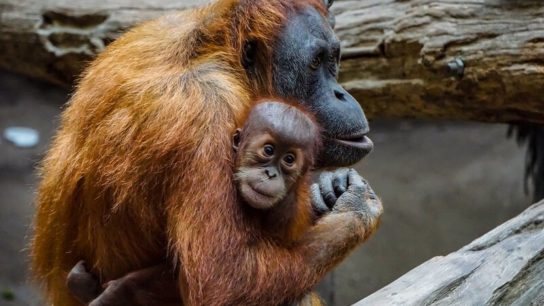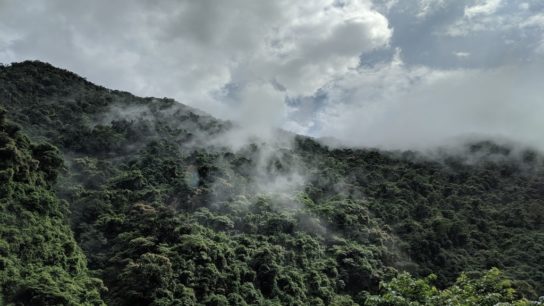“This World Nature Protection Day should serve as a reminder that we all have a role to play in the protection of the natural world that we all depend on,” writes Daniel Kaul.
—
This World Nature Conservation Day, many may get a re-energized sense of how important it is to protect our natural world. Yet many may feel that they are too small to make a difference or lack the time or necessary scientific training.
As a tour operator who runs conservation-focused trips, I hear many people saying the same thing; “I want to get involved in conservation and the protection of nature, but I don’t know how.”
This is where Citizen Science comes in. Citizen Science is as it sounds: “the collection and analysis of data relating to the natural world by members of the general public, typically as part of a collaborative project with professional scientists.”
Indeed, with the advent of artificial intelligence (AI), data has become gold. Yet, there are simply too few paid scientists on the ground collecting the data that today’s climate scientists desperately need. That’s where you come in.
Engaging in Citizen Science wouldn’t just help scientists and conservation efforts. The process could help galvanize a whole new generation of digitally native, environmentally-friendly youngsters towards climate action.
If you’re looking to engage in citizen science this World Nature Conservation Day, here are some projects for you.
- Local Observations
Citizens can contribute to climate data by observing and recording local weather patterns, plant blooming times, animal migrations, and other ecological changes. This data can help scientists understand regional climate impacts and variability.
For example, in the UK, apps like FIT Count enable you to record numbers of local pollinators in the area. In the US, the National Phenology Network allows users to collect data on a range of natural indicators, like animal numbers, blossoming times, and weather conditions.
- Remote Sensing
People can use smartphones and other devices to take pictures and record data on air quality, temperature, and other climate-related factors. This essentially adds a whole layer of research infrastructure, meaning that scientists can collect data in places they wouldn’t normally have access to.
PurpleAir encourages users to install low-cost air quality sensors that can help feed data in real time. In the event of a wildfire, for example, the sensor can be used to identify the amount of smoke in a particular area, to help map the development of the fire in real-time.
- Biodiversity monitoring
Species tracking can help counter the climate crisis through sheer data. Projects like both the iNaturalist and eBird will not only allow you to update your own sightings. By using the app, you can build your own natural literacy, as the apps teach you about what you’re observing, as you observe it.
In fact, eBird has been one of the most successful citizen science projects across the globe; over one billion bird observations have been recorded from around the world, making a positive contribution to the development of ornithological studies.
- Distributed Computing
Citizen Science extends well beyond recording your own observations. Many complex climate models require a huge amount of expensive processing power to perform. Websites like ClimatePrediction.Net use the spare processing power of their users’ computers to run complex climate models. In this case, users can help support the climate fight without lifting a finger.
- Combining Citizen Science With Tourism
You can engage with Citizen Science in your own back garden. However, there is an increasing amount of opportunities to help promote conservation through data collection while enjoying some well-earned time off. As a tour operator myself, I have personally witnessed a huge increase in people who want to make sure their precious time off also contributes to environmental protection.
For example, many tour operators offer a range of trips and projects that are combined with citizen science tracking activities. For example, one can record elephant migration habits, the movement patterns of wild dogs and whale sharks and bird flight paths, all while immersing oneself in some of the wildest habitats on earth.
- Disaster response
Many citizen projects not only help us to mitigate climate change but also help us adapt to its impact. Flood Network UK provides real-time flood monitoring using citizen-installed sensors. In the US, the mPing app, created by the National Severe Storms Agency, allows users to log and categorize extreme weather events in their region, which can then help inform national disaster response. And in Australia, the Fireballs in the Sky app helps citizens around the world contribute to leading meteorological and wildfire research.
The potential of citizen science in the age of technology is only growing. Most citizens are armed with a computer in their pocket, making it even easier for anyone to become a citizen scientist.
This World Nature Protection Day should serve as a reminder that we all have a role to play in the protection of the natural world that we all depend on.
Use this as your signal to take out your phone and start protecting nature, one data entry at a time.
How can I contribute to a more sustainable planet?
- 🗳️ Vote for Climate Action: Exercise your democratic rights by supporting candidates and policies that prioritize climate change mitigation and environmental protection. Stay informed with Earth.Org’s election coverage.
- 👣 Reduce Your Carbon Footprint: Make conscious choices to reduce your carbon footprint. Opt for renewable energy sources, conserve energy at home, use public transportation or carpool, and embrace sustainable practices like recycling and composting.
- 💰 Support Environmental Organizations: Join forces with organizations like Earth.Org and its NGO partners, dedicated to educating the public on environmental issues and solutions, supporting conservation efforts, holding those responsible accountable, and advocating for effective environmental solutions. Your support can amplify their efforts and drive positive change.
- 🌱 Embrace Sustainable Habits: Make sustainable choices in your everyday life. Reduce single-use plastics, choose eco-friendly products, prioritize a plant-based diet and reduce meat consumption, and opt for sustainable fashion and transportation. Small changes can have a big impact.
- 💬 Be Vocal, Engage and Educate Others: Spread awareness about the climate crisis and the importance of environmental stewardship. Engage in conversations, share information, and inspire others to take action. Together, we can create a global movement for a sustainable future.
- 🪧 Stand with Climate Activists: Show your support for activists on the frontlines of climate action. Attend peaceful protests, rallies, and marches, or join online campaigns to raise awareness and demand policy changes. By amplifying their voices, you contribute to building a stronger movement for climate justice and a sustainable future.
For more actionable steps, visit our ‘What Can I do?‘ page.
This story is funded by readers like you
Our non-profit newsroom provides climate coverage free of charge and advertising. Your one-off or monthly donations play a crucial role in supporting our operations, expanding our reach, and maintaining our editorial independence.
About EO | Mission Statement | Impact & Reach | Write for us













